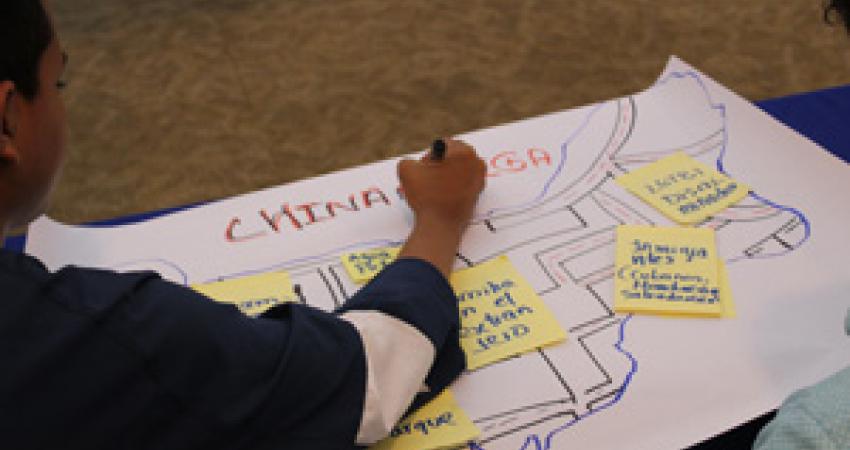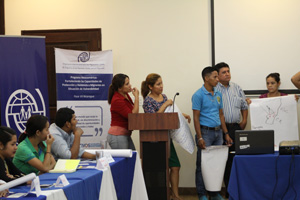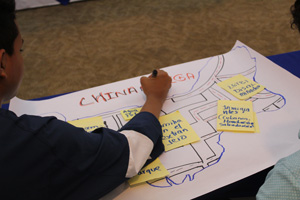Young people trained to raise awareness of migration officials

Nicaragua. In order raise awareness about the needs of protection and assistance to young migrants in Mesoamerica, IOM, in coordination with the Departmental Delegation of Chinandega of the Ministry of the Interior, trained 20 youngsters as trainers, who later replicated the workshop to local authorities.

The initiative is part of the implementation of the Mesoamerica Program: Strengthening the capacities of protection and assistance to Vulnerable Migrants, funded by the United States Department of State's Bureau of Population, Refugees and Migration. This Program developed a Training Module on Youth and Migration, more than 560 young people and officials benefitted from this training opportunity last year in Mesoamerica, and now Nicaragua will start its implementation.
This methodological tool aims to help young people to reflect on their own reality, on migration and the needs of assistance and protection of migrants, as well as the generation of strategies for the defense and promotion of rights with a gender perspective and diversity.
 According to the Latin American Faculty of Social Sciences (FLACSO), the majority of migrants in Central America are young people who do not exceed 30 years of age. This population group is more affected by crime and violence, so it is necessary to identify the conditions of vulnerability to provide protection and assistance according to their differentiated needs.
According to the Latin American Faculty of Social Sciences (FLACSO), the majority of migrants in Central America are young people who do not exceed 30 years of age. This population group is more affected by crime and violence, so it is necessary to identify the conditions of vulnerability to provide protection and assistance according to their differentiated needs.
These trained young people will give the workshop "Mechanisms of protection of rights and assistance to young migrants", to institutional officials who serve young migrant people, in the department of Chinandega.
This workshop will analyze and identify some of the risks and vulnerability conditions faced by young migrants, as well as the reasons that motivate them to migrate. It will also provide information on national and international normative frameworks on the human rights of migrants, where some protection and assistance practices are identified.